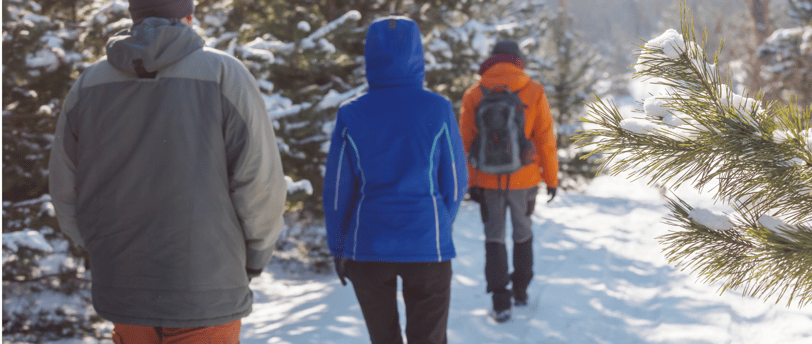Mastering Winter Hiking: The Importance of Layering Clothes and Tips to Stay Warm
HIKING & CAMPING GEAR
3/21/20242 min read


Winter hiking offers a breathtaking landscape of snow-covered trails and crisp, fresh air, but it also presents unique challenges when it comes to staying warm and comfortable. One of the most effective strategies for braving the cold temperatures and variable weather conditions is mastering the art of layering clothes. Layering not only provides insulation but also allows hikers to regulate their body temperature and stay dry throughout their outdoor adventure. Here's why layering is crucial for winter hiking and some essential tips to help you do it right.
Importance of Layering:
Insulation: Layering allows you to trap warm air close to your body, providing essential insulation against the cold. By wearing multiple layers, you create pockets of air between each garment, which helps retain heat and keeps you warm in chilly conditions.
Moisture Management: Hiking in winter can be physically demanding, leading to perspiration and moisture buildup. Layering clothes made from moisture-wicking materials helps to draw sweat away from your skin, keeping you dry and comfortable throughout your hike. Wet clothing can quickly lead to discomfort and even hypothermia, making moisture management essential for winter hiking.
Versatility: Winter weather can be unpredictable, with temperatures fluctuating throughout the day. Layering allows you to adjust your clothing according to changing conditions. You can easily add or remove layers to regulate your body temperature and stay comfortable as you hike.
Tips for Layering Clothes:
Base Layer: Start with a moisture-wicking base layer made from materials like merino wool or synthetic fabrics. This layer should fit snugly against your skin and wick moisture away to keep you dry and warm.
Insulating Layer: The middle layer provides insulation and warmth. Choose a fleece jacket or down-filled vest to trap heat close to your body. This layer should be breathable and lightweight to prevent overheating.
Outer Layer: The outer layer acts as a barrier against wind, rain, and snow. Opt for a waterproof and windproof shell jacket and pants to protect you from the elements. Look for features like adjustable hoods, pit zips, and reinforced seams for added durability.
Accessories: Don't forget to layer accessories like hats, gloves, and neck gaiters to protect exposed areas from the cold. Insulated, moisture-wicking socks and waterproof boots are also essential for keeping your feet warm and dry.
By mastering the art of layering clothes and following these tips, you can stay warm, dry, and comfortable while exploring the winter wonderland on your next hiking adventure. So, bundle up, hit the trails, and embrace the beauty of nature in its snowy splendor.

